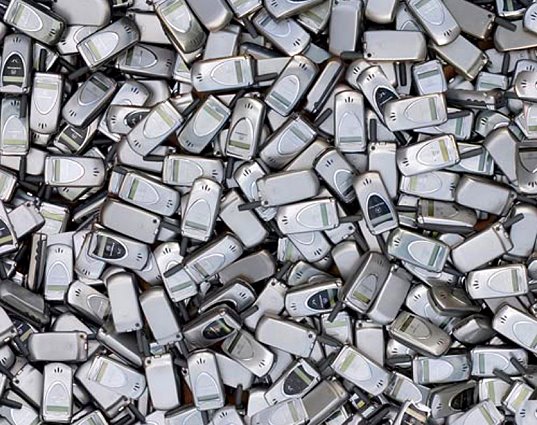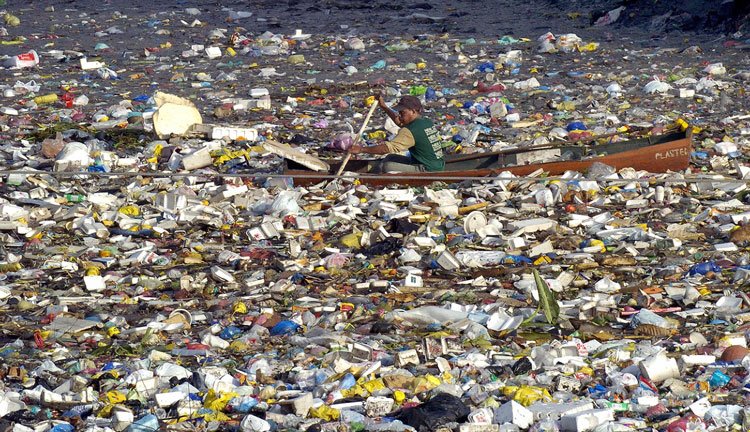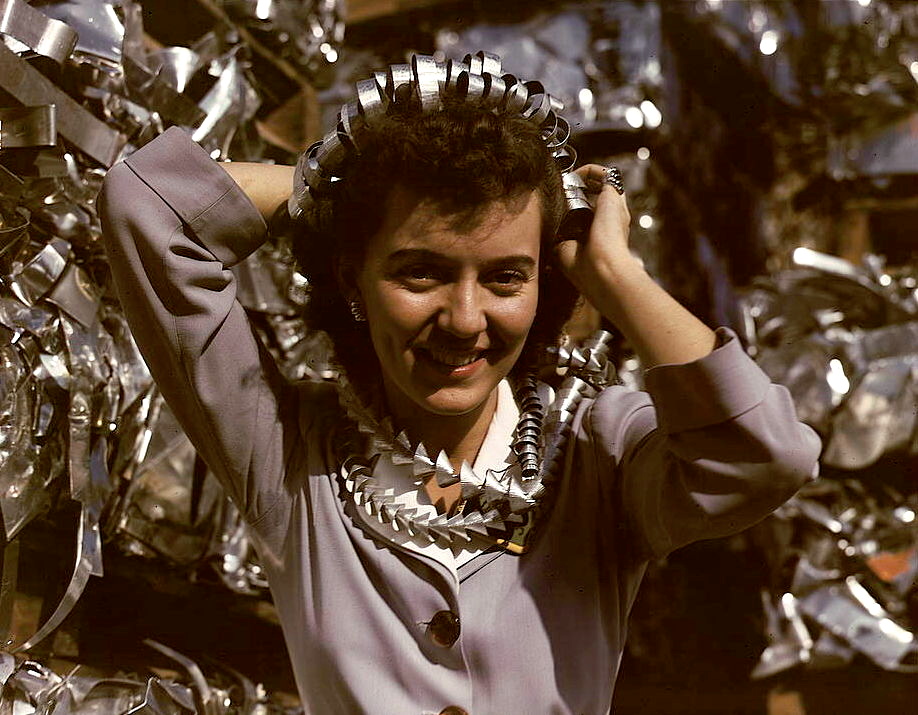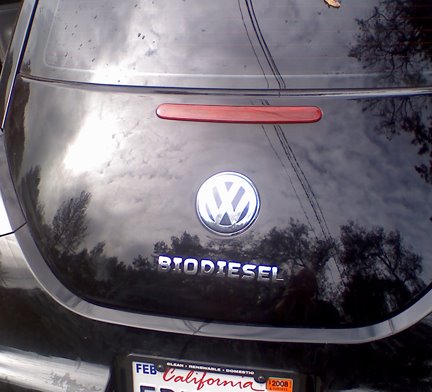The famously conservative oilman T. Boone Pickens has launched an exciting and promising campaign to reduce America’s dependency on foreign oil. His plan is spelled out in the video below and his website is smart, straightforward and to the point. This bears some watching.
All posts by skybonnie
100 Million Cellphones

There are lots of issues with this little act: the average cell phone user is urged and enticed to upgrade their phone every year or so resulting in the necessary discard of the old phone. The major service providers make half-hearted attempts to provide envelopes for recycling, but my drawer is full of the family’s used cellphones because I don’t trust where they go. I’ve heard too many horror stories of American electronics waste going to third world countries where little kids are exposed to all kinds of hazardous metals as they take apart the discarded appliances. Okay, maybe I’m exaggerating; unfortunately, probably not.
Some more nasty facts: over 300 million printer cartridges are thrown away into landfills each year; over the next three years Americans will discard 130 million cellphones; Americans are 5% of the world population but they generate over 30% of the world’s trash.
Well, here’s the good news. I’ve always had affection for the US Postal Service (except for the junk mail they insist they must put in my P.O. box that I then toss into their paper recycling bin–a battle for another day) and now they have come up with a significant public service. Starting out in nearly a dozen metropolitan areas, the Post Office will now carry free mailer envelopes as part of a new Mail Back program for recycling small electronics and laser and inkjet printer cartridges. And this is recycling we can trust. The company paying for this is Clover Technologies Group, a company totally vetted and dedicated to zero waste to the landfill. In other words, they will retrofit, refurbish and resell whatever they can and totally take apart and recycle or reuse what they cannot sell.
If this works out, they will take the program across the country–imagine the potential impact from the one agency in contact with every home and business in America.
Soupe de Plastique

Imagine yourself independently wealthy. You buy yourself a yacht. You love the open seas. You become passionate about sailing and your life revolves around planning trips to exotic places.
Then something happens that changes your world.
Such is the story of Charles Moore, heir to an oil fortune, now environmental activist and founder of the Algalita Marine Research Foundation.
After designing his own unique racing yacht, Moore entered a Los Angeles to Hawaii race. It was 1997. Upon sailing home he willfully entered a part of the Pacific Ocean as a shortcut home, an area that is usually avoided by sailors and fishermen: an area of weak winds and weak currents and little fish that is the eye of a circle of currents thousands of miles wide called the North Pacific Gyre.
What he stumbled upon changed his life.
A sea–as far as the eye could see–of plastic debris–yellow Chevron oil bottles, tampon applicators, plastic bags, old fishing lines, shampoo bottles and Japanese traffic cones. He traveled for days through discarded plastics, miles after mile after mile.
I can only imagine his disbelief, his shock. When I first read about his experience, I too was shocked and wrote about it here. The ocean that he sailed because it was endless and pristine, was much like the wilderness that avid backpackers venture into to escape civilization –only to find the its ugliest remnants–trash.
In Moore’s words:
I often struggle to find words that will communicate the vastness of the Pacific Ocean to people who have never been to sea. Day after day, Alguita was the only vehicle on a highway without landmarks, stretching from horizon to horizon. Yet as I gazed from the deck at the surface of what ought to have been a pristine ocean, I was confronted, as far as the eye could see, with the sight of plastic.
Not a scientist himself, but with conviction and money, Moore founded the Algalita Marine Research Foundation in 1999 and built a network of chemists and scientists. He enjoined Curtis Ebbesmeyer, an oceanographer and leading authority on flotsam, who famously tracked the spill of 80,000 Nike running shoes on their way from China to the US. (the resultant wash-up on beaches throughout the Pacific allowed him to track and identify the behavior of currents).
Since this initial discovery and the funding of the Foundation, Moore has underwritten several trips to the area for further research. In 2001, according to the Marine Pollution Bulletin, they published that there were six pounds of plastic floating in the North Pacific subtropical gyre for every pound of naturally occurring zooplankton.
Most recently, after another exploration and research trip to the region, Moore acknowledges that the results are beyond imagination: the plastic soup he encounters is now–not the size of Texas as was noted in 1997. Not the size of the United States as noted in 2001. Now it is estimated, when one takes into account the “eastern” and “western” patches, to be double the size of the continental US.”
There are those who dispute his figures and Moore acknowledges that it is difficult to document the phenomenon. Satellite imagery is not able to pick up the plastic because it floats slightly below the surface and is largely translucent.
The “soup” is actually two linked areas, either side of the islands of Hawaii, known as the Western and Eastern Pacific Garbage Patches. According to a study released by Greenpeace, about one-fifth of the junk – which includes everything from footballs and kayaks to Lego blocks and carrier bags – is thrown off ships or oil platforms. The rest comes from land.
Ebbesmeyer, as “flotsam expert” portrays the North Pacific plastic trash cluster vortex as a living entity:
“It moves around like a big animal without a leash.” When that animal comes close to land, as it does at the Hawaiian archipelago, the results are dramatic. “The garbage patch barfs, and you get a beach covered with this confetti of plastic,” he added.
All this plastic breaks down but never goes away. Sunlight breaks the plastic into smaller and smaller bits, all ingested gradually into the food chain. Birds dive for the brightly colored plastic and sea turtles chase plastic bags like jellyfish.
“What goes into the ocean goes into these animals and onto your dinner plate. It’s that simple,” said Dr Marcus Eriksen, director of research and education.
This is our petroleum, our drilled and pumped oil, our endless ingenuity, reconfigured into new matter; matter causing serious consequences for our living on the planet.
The annual production of plastic resin in the United States has roughly doubled in the past 20 years, from nearly 60 billion pounds in 1987 to an estimated 120 billion pounds in 2007, according to a study by the American Chemistry Council, which represents the nation’s largest plastic and chemical manufacturers.
So plastic is not going to go away. We can’t even do a massive cleanup operation to stop the damage. But we must start being aware of what we are doing. Remember that lovely video of the floating plastic bag in the movie “American Beauty”? Now picture that bag escaping the little whirlwind it was in as it begins its journey down the storm drain and out to sea.
“Oil is the raw material for most plastics manufacturing; oil was also the source of Moore’s inherited fortune.
“In a way, part of all this is remediation for the consequences of my grandfather’s life,” Moore says. “I guess maybe I need to make amends.”
Biofuels Busted!
Tortillas serve as the main protein staple of the Mexican diet, particularly for the poor. While most observers related this to the North American Free Trade Agreement and its consequences on small Mexican farmers, what struck me was the increased focus of American industry on growing corn for ethanol, diverting it from the food supply, and also increasing its market value.
I tucked this worrisome anomaly away in my mind for further investigation, and here, one year later it re-emerges: two separate studies published in the recent issue of Science magazine conclude that the rosy scenario of producing ethanol from corn and other feedstocks as an alternative fuel that would reduce emissions causing global warming—is actual a scenario for potentially double those greenhouse gas emissions, because enormous swathes of cropland are being converted to grow this new valuable commodity. As the lead author of one of the reports and an environmental researcher at Princeton University, Timothy Searchinger explained to the International Herald Tribune:
“When you take this into account, most of the biofuel that people are using or planning to use would probably increase greenhouse gasses substantially.”
Confusing!
We know that biofuels have been widely promoted by Congress and this administration as key to replacing our dependence on foreign oil. Ground-breaking energy legislation was recently passed mandating a six-fold increase in the use of ethanol by 2022. Proponents argue that from 20 – 70% fewer emissions (with switchgrass-based ethanol) than gasoline is reason enough to put full weight behind its amped up production.
As a “renewable” energy source, meaning, we just grow more instead of drill more of the finite stuff, the ethanol equation was appealing. According to the Science studies, however, what was missing from the equation was the huge increase in land use and the resultant loss of carbon sinks, or carbon absorbing forests, wetlands, croplands, that would result from the mad rush to produce this new heavily subsidized “oil” boom.
The European Union’s experience with biofuels is instructive. Long before the US they were mandating that biofuels be integrated into the fuel supply system; later, to avert the rush to “grow” more fuel and maintain their sources as “sustainable”, they required that the biofuel come from sustainably harvested sources ensuring that their biofuel use was carbon neutral. The consequence, however, was that the exporting country simply exported crops from the existing croplands—designated “sustainable,” but the farmers and poor, in response to the lack of croplands just cleared more land to grow their own foodcrops.
While this is not the end of the biofuel story–for there is evidence that a more careful approach to production, especially using waste products instead of feedstocks, may still provide some useful gasoline substitutes—this is a great lesson for those wishing to rush forward with solutions, however well intentioned.
Here’s another great one! Let’s make gasoline from air!!!
For a minute there, I thought I would have egg all over my face—and my biodiesel Bug.
Why Should We Care?

There were a lot of comments to my last post (many thanks) and since only some are offered in the Comments section I would like to share some good points with you.
“Those of us who try to avoid using plastic or paper bags at the grocery store, walk or bike whenever possible, recycle paper, cardboard, plastic and food items that can be mulched, sometimes feel as if it is hopeless because of the millions who don’t…and don’t care either.”
I hear you. And I feel your pain. But herein lies the challenge. I agree that we are not going to beat this by going bagless, hybrid or organic. No amount of bus rides, CFLs or tap water is going to turn this thing around. It is bigger than all of us and requires international action. But it also requires a new consciousness of our interconnectedness and our relationship with the planet. Humankind must emerge from its so self-involved adolescence. So, as you lug your reuseable bags while biking to the store after turning off all the lights and unplugging your cell phone charger and shutting down your computer–remember that you are modeling behavior that is the new standard of the right way to be.
“…nothing will be done until the rich nations of this world begin to suffer and the situation is almost too late to reverse. That’s if we’re lucky. Otherwise, be glad that you are living your life now and that you won’t be around to see what the future has in store.”
My sister would reply that in fact, she plans on being back so she’ll pay attention to the now, thank you very much. I can’t count on that but I care when I look at my grandchildren and try to imagine what life will be like for them. Supposedly, with enough political will, we can demand that our leaders address the issue of global warming. I understand your skepticism, however; as a student of political science I know that there are many forces pushing in many directions. I console myself with the stories of World War II and how the US pulled together–and did some remarkable things! So many examples! Because canned goods were needed to supply troops overseas, Americans turned to Victory Gardens, planting 20 million of them to provide vegetables for their families. Drivers received coupons for 3 gallons of gas per week…not to save gasoline but to save on automobile tires and the supply of rubber.
Victory Gardens, planting 20 million of them to provide vegetables for their families. Drivers received coupons for 3 gallons of gas per week…not to save gasoline but to save on automobile tires and the supply of rubber.
 And, as the 1942 poster above depicts, the people were asked to conserve, collect and recycle everything from rags, metal, rubber and paper.
And, as the 1942 poster above depicts, the people were asked to conserve, collect and recycle everything from rags, metal, rubber and paper.
“…There are lots of people with their heads in the sand about what we humans have unconsciously been doing to our earth. This is not a liberal vs conservative matter and getting into stereotypes clouds serious issues for our survival…This is an ethical matter and ignoring evidence worldwide is unconscionable.”
It will take some time to bring some into the fold but overall I am hopeful. And that’s why I’m here.
Something Hopeful from the Debate Tonight
I haven’t posted for a while. I have had a tsunami of thoughts, emotions and ideas, and somehow I couldn’t find a way to put something coherent in this place that I have dedicated to getting better informed about what is happening and what we need to do. Literally, I have been troubled by the resistance from my own family. I am trying to understand why they think I am under some spell!
So let’s start simply and over again: tonight’s Republican debate. There has been a bit of an uproar (a quiet one I suppose for those who don’t subscribe to the things I do) about the lack of questions concerning global warming posed to the presidential candidates from each party concerning the steps that each candidate as president might take. One assessment stated that out of nearly 3,000 questions posed to presidential contenders only 3 related to global warming–way less than the number of questions asked about UFOs and what sports team they were rooting for. I suppose we must be understanding of the media’s need to lighten up the seriousness of political debate lest they lose some viewers (?) That is another debate entirely, sigh, for another day.
The one response at tonight’s debate that stands out for me is that of McCain’s. In response to a rare question about what to do about global warming: he would like to inspire as much technological and entrepreneurial talent as possible to clean our air. Then, even if we discover “that there is no such thing as climate change” well, then we’ve at least not wasted the effort and “we’ve given our children a cleaner world.” There are many clues here, and many are found in the language. Even for skeptics, I wonder what is the threat? Taking care of the planet seems a high consciousness thing to do for all.
Of all the Republican candidates, McCain is at least vocal about his support for active curtailments of carbon emissions, even if he is couching it under we’re OK if it is all a lie, idea. All the other remaining candidates seem to think that it is a “liberal” made up problem and of course, any kind of action will hurt business and hurt America and if China and India are not held to account then we shouldn’t pursue any kind of emissions control, much less caps on carbon.
Although they all love the idea of state’s rights–with Arnold Schwarzneggar in the audience they applauded what California is doing to control emissions in its own state and Huckabee said, great, if it doesn’t work, I welcome the job loss movement to Arkansas–they seem to be playing to a perceived base that doesn’t give much credence at all to the idea of global warming.
What is going on here? The idea of global warming is having a profound effect throughout the US. Businesses are embracing the need to be “green” because consumers are demanding social responsibility from the companies where they purchase products (“greenwashing “is now a well-known marketing term). This is one of those amazing viral ideas that has spread itself from place to place across the country within the past four to five years. It has taken an amazing hold on the thinking throughout the country.
Yet……the idea that global warming is an Al Gore-driven left-wing conspiracy still has deep roots. I am trying to understand the power of this contrary idea; and I have to admit that I must be so “liberal” that this makes absolutely no sense to me. But the more I am exposed to it, the more I realize that it must be overcome. I welcome arguments to the contrary to “educate” me in what I must be missing.
Whomever you are, if you care about these issues as important or maybe you see them as some sort of demagoguery run mad: Please take some time, if you can to watch this. I can’t continually make the arguments myself. This is so beyond “opinion” and into the realm of manipulation. Why can’t smart people see this? If I am missing something, can someone fill me in?
So am I the one who is deluded? Please tell me!
More on Catalog Choice
Check out this short video of Bill Moyers interviewing the originator of Catalog Choice. The problem is worse than I ever dreamed but the solution proposed is more wise and far-reaching than I had realized.
Coal as Culprit

Some of you may recognize this Google map of Marina del Rey in Southern California. It has a blue overlay to demonstrate what would happen with a 5 meter rise in sea levels.
According to the advocacy group Architecture 2030, Home Depot is planting 300,000 trees in cities across the US to help absorb carbon dioxide emissions… The CO2 emissions from only one medium-sized (500 MW) coal-fired power plant, in just 10 days of operation, will negate this entire effort. Similarly, “if every household in the US were to replace one incandescent light bulb with a compact fluorescent (CFL), the CO2 emissions from just two medium-sized coal-fired power plants each year would negate this entire effort.”
The group has developed and paid for a large advertisement in today’s New York Times and they will be carrying it throughout the week in other venues as well. This is an enormous push back against building or putting into operation any new coal plants in the country.
Why coal? Many might think that our SUV culture is mostly responsible for US carbon emissions; actually it is the so-called “built environment”. According to Architecture 2030
“Buildings use 76% of all the electrical energy produced at coal plants.Buildings are the single largest contributor to global warming, accounting for almost half (48%) of total annual US energy consumption and CO2 emissions.”
Read the ad and see the logic for yourself. Coal is not the “cheaper” alternative to buying foreign oil. It carries a very high price.
Weatherman Calls Warming a Scam
John Coleman, the founder of the Weather Channel made the news rounds when he wrote an article the other day:
“It is the greatest scam in history. I am amazed, appalled and highly offended by it. Global Warming; It is a SCAM. Some dastardly scientists with environmental and political motives manipulated long term scientific data to create an illusion of rapid global warming.”
In short, global warming is a hoax cooked up by scientists to garner themselves huge research grants. I’m not going to argue with John; some would say simply ignore such rantings. Or, as Jay Leno says: “My thing with the green situation is: Even if you don’t believe in global warming, don’t you want to screw the oil company or gas company or utility company?”
My curiousity is piqued, however, about just why there is such a vociferous backlash to something that is rapidly moving mainstream. Clearly, we don’t know everything; some of the prognosticators and their predictions will be shown to be wrong, but so much of the thinking, speaking and writing on climate change makes a certain sense. Or am I just being brainwashed?
Yesterday I read the entire text of James Hansen’s recent testimony before the Iowa State Utilities Board. He was an expert witness to argue against a new coal plant opening up. I did skim the technical parts but overall I found his arguments very convincing.
He holds some rather radical ideas, one being that an immediate moratorium on coal plants (any that do not carbon sequester, or recapture released emissions) is necessary before “feedbacks” resulting from the release of CO2 emissions will cause an acceleration of climate change impacts (somewhat like my earlier discussion of tipping points) and that developing countries with increasing coal use, such as China and India, should be given 10 years before they should be required to curb their coal plant emissions, mainly because cumulatively, we (US, Canada and Europe) have been responsible for the most CO2 emissions over time–regardless of the fact that China’s current emissions now surpass those of the US. This sounds tremendously fair and his calculations bear out his sense that the planet can handle that along with increased efficiencies, etc.
The public policy and politics of all of this is tremendously complex and we all need to pay attention and educate ourselves. I hope to help through this blog. But back to the Grand Disagreement.
Hansen concludes his testimony with this personal observation:
“Based on experience, I believe that the difficulty in communication about global warming and the lack of success in obtaining actions needed to reduce global warming are, at least in part, a consequence of the role of special interests
who seem to place inordinate priority on short-term profits. Although global warming has received much attention of late, there remains a large gap between what is understood by the relevant scientific community and what is known by those who need to know, the public and policy-makers. I find it puzzling that conservatives, and I consider myself to be a moderate conservative, are not more concerned about preserving creation…”
So…global warming is a hoax to tap into lucrative research grants and… special interests are spreading disinformation and disbelief to protect their short-term profits. Enough already.
The Last Year of the Catalog
It’s that season again and the mailbox is filling with oh so many offerings of this sale and that, cajoling, enticing me to buy soon and early and get free shipping and get a free one if I only send one.
I won’t harangue you about how many trees were consumed in creating these catalogs or how much carbon is being spewed into the air just delivering them to every American mailbox. But has it occurred to you that these consumption instigators are simply becoming irrelevant? Not one of these businesses would be caught dead without a full-fledged website sporting a full online display of every item in their catalog!
I used to refer to that pile of Christmas catalogs as my “idea” pile; this year the stack will become my more aptly named “funeral” pile. I am saving them to enter, one by one, into Catalog Choice to put an end to their endless distribution in my direction. Within 10 weeks of such action, according to this service, I will no longer receive them. Consider this my vote.

